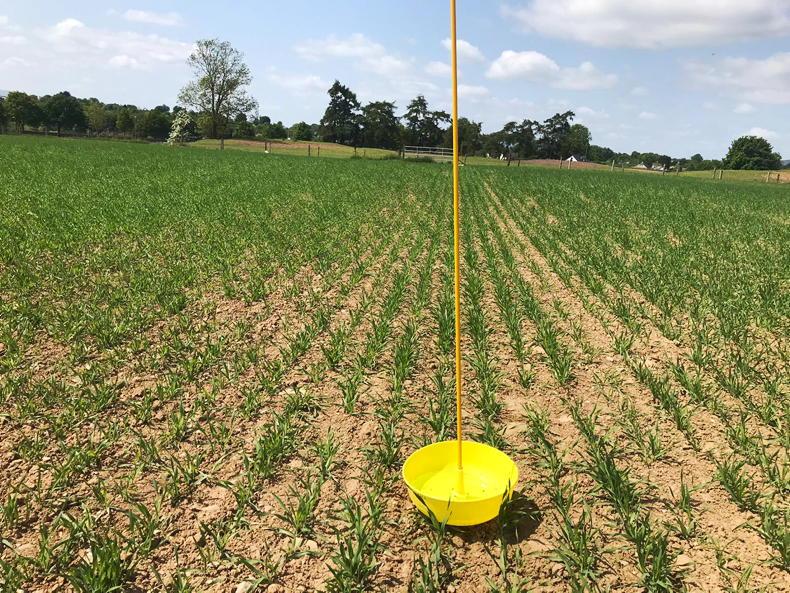At this month's Crops and Cover Crop Cultivations open day, you will hear all of the latest research on barley yellow dwarf virus (BYDV).
The event takes place on Wednesday 21 June
In this article, some of that work is previewed from a tower measuring aphid numbers to developing systems to help farmers to decide what to spray.
Control of cereal aphids
Control of cereal aphids and the virus they vector - BYDV - is becoming increasingly challenging due to insecticide resistance, loss of insecticides, pesticide reduction targets and changing climate.
The Teagasc suction tower network, coupled with advanced molecular surveillance tools, aims to significantly increase the information available upon which growers can make a decision on whether or not to apply an insecticide.
Currently, no thresholds exist for controlling aphids and BYDV. As low numbers of aphids are capable of spreading BYDV within a crop, presence of aphids in a field is automatically considered a risk, even though the resistance status and the presence of virus in the aphids is unknown.
Furthermore, virus levels vary from field to field and across seasons, making it difficult to know when spray decisions are justified. These challenges may be causing overuse of insecticides, which increases the risk of insecticide resistance developing further.
New research
New Teagasc research will be on display at the open day and attendees will have a chance to see the suction tower up close.
The research involves testing different aphid monitoring methods over three years to determine the most appropriate approach growers can use to assess the risk of aphids and BYDV to their crops.
Aphids are first identified visually and then undergo molecular analysis to confirm the presence or absence of BYDV and also insecticide resistance.
In addition to monitoring the aphid, it is also important that we continue to monitor the viruses they spread.
In 2021 and 2022, we surveyed barley crops throughout Ireland using DNA sequencing technology. This uncovered a greater diversity of BYDV strains than previously thought.
While the most common species identified was BYDV-MAV, which was observed in all field samples, BYDV-PAV and BYDV-PAS strains were also identified, but less frequently.
Genetic code
This work has uncovered the genetic code of BYDV species in Ireland. As a direct result, this has enabled us to develop improved molecular surveillance tools that we are now using as part of the monitoring programme.
Through combining data from the Irish aphid monitoring network with our advanced molecular surveillance tools, this has and will continue to enhance our understanding of BYDV risk and spread.
Importantly, this will improve our ability to advise on spray decisions for the control of aphids and BYDV in the future, but the systems developed are also allowing us to monitor other insects of importance to growers in both the tillage and horticulture sectors.
Hear all the latest on BYDV and aphid research at this year's Crops and Cover Crop Cultivations open day on 21 June at Teagasc Oak Park.






 This is a subscriber-only article
This is a subscriber-only article











SHARING OPTIONS: